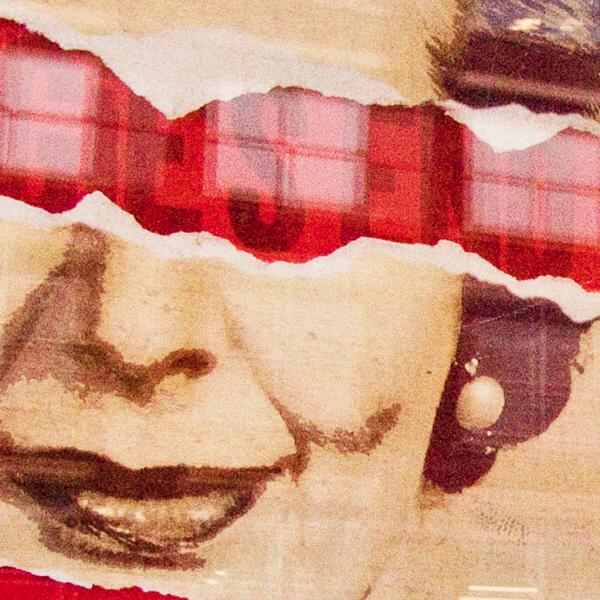The mythology regarding the 1945-51 Labour governments dies hard on the left, particularly in the era of Jeremy Corbyn’s Labour which often sees itself taking up the mantle of an older, less compromised, form of state socialism. The foundation of the welfare state and the National Health Service is a special touchstone, with both it and its founder, Nye Bevan (pictured above with nursing staff at Park Hospital, Davyhulme) seen as the great examples of the British socialist tradition.
It’s easy to see why socialists might cling to the NHS as an achievement. It provides something we all need, healthcare, as a right rather than a privilege, whilst sharing the costs across society and has consistently been rated as one of Britain’s most popular institutions. In fact, in a poll conducted two years ago, 52% of people rated it the thing that made them “most proud to be British,” five points above the armed forces.
If you’ve ever told a leftist that you don’t vote because it never achieves anything, the NHS is one of the arguments you’ll hear in defence of parliamentary socialism. But how much credit does the Labour Party deserve for implementing it? And how many of its flaws date to the visions of its founder?
In terms of credit, Labour leftists are partially right to claim the NHS we ended up with owes a great deal to Bevan. Although a Tory minister (Henry Willink) wrote the 1944 White Paper which many of the service’s basic principles were based on, it was Bevan who decided to nationalise Britain’s hospitals and to bring everything under central government control. Britain would have established some sort of national health system with or without a Labour government, but having a nationalised one was mostly them.
Having said that, the exact benefits of having opted for nationalised care are fairly questionable. Prior to nationalisation, British healthcare was provided by two kinds of institution — the charitable “voluntary hospitals” and “local authority hospitals” run by municipal councils. Both kinds of institutions had their flaws. With voluntary hospitals raising money through paying patients or donations and municipal hospitals drawing on local taxes both quality and access to services varied a great deal from place to place. Whilst London, with its huge local tax base, was well served by a variety of well-funded municipal hospitals, in poorer parts of the country (particularly industrial areas) medical services were nearly impossible to get hold of.
Whilst nationalisation looked to address these health inequalities, the reality of State planning was that initial budgets were built on the foundations of older medical services and for the most part just reinforced them.
The early NHS was managed via appointed Regional Health Boards and Health Management Committees which the Labour government stacked with the only people they saw as qualified to run them — the old hospital administrators from the private sector, alongside the great and the good of both local politics and the medical profession. Health workers were soon complaining that nationalisation of the hospitals had simply installed a layer of Tory grandees to run the new system.
In many ways this new governance system was even less accessible to the public than the old one had been. Some pre-NHS private medical services like the Tredegar Medical Aid Society had been established on the basis of mutual aid, with senior figures elected by members of the society (the workers who paid its subscription fees). Citizens could also attempt to shape municipal medical services through local elections. In the new NHS, the local voice was largely marginalised, something that contributed to ongoing inequalities that the government never really looked to address until the mid-1970s.
Access to State funding and new medical advances certainly did improve health services in post-war Britain, just as rising living standards and improved nutrition increase life expectancy. However the opportunity to build a health service where patients and community members had a real say was largely lost. For staff too, the NHS for the most part established a dictatorship of State and local elites. Reflecting his own, top-down and characteristically Labour, ideas about socialism, Bevan was explicit about excluding health workers from NHS decision-making, telling nurses in 1948 that no staff were to be represented on health boards or hospital management committees.
Technically true, Bevan was in fact misleading the nurses. Whilst nurses and other health workers like midwives and physiotherapists, as well as cleaners, caterers, porters and maintenance staff, were starved of influence in the new NHS, doctors (and some senior matrons) were amply represented on management boards, entrenching elite control of the service.
Although some hospitals established Joint Consultation Committees to facilitate worker influence over the running of their own workplaces, the Ministry of Health made no effort to promote them and cynical managers generally ignored them. By the 1960s only one hospital in ten had one, and workers complained that suggestions about improvements for staff were almost always ignored or delayed.
Like much of Labour’s post-war settlement, the infant NHS was set up to entrench a state monopoly and therefore disenfranchised both the workforce and the wider community. Whilst the NHS made general improvements in healthcare in Britain, it established a pattern of central control which perpetuated inequalities from the old system that persist to this day in the “postcode lottery” of NHS services.
In excluding the workforce from a meaningful say in how their workplaces were run it laid the groundwork for the exploitation of its workforce, something reflected in the longstanding issues over pay and working conditions in the service. That exploitation and inequality is a vivid demonstration of the limits of the State socialism offered by even the most radical of Labour’s traditions.
This article first appeared in the Winter 2016 edition of Freedom anarchist journal








